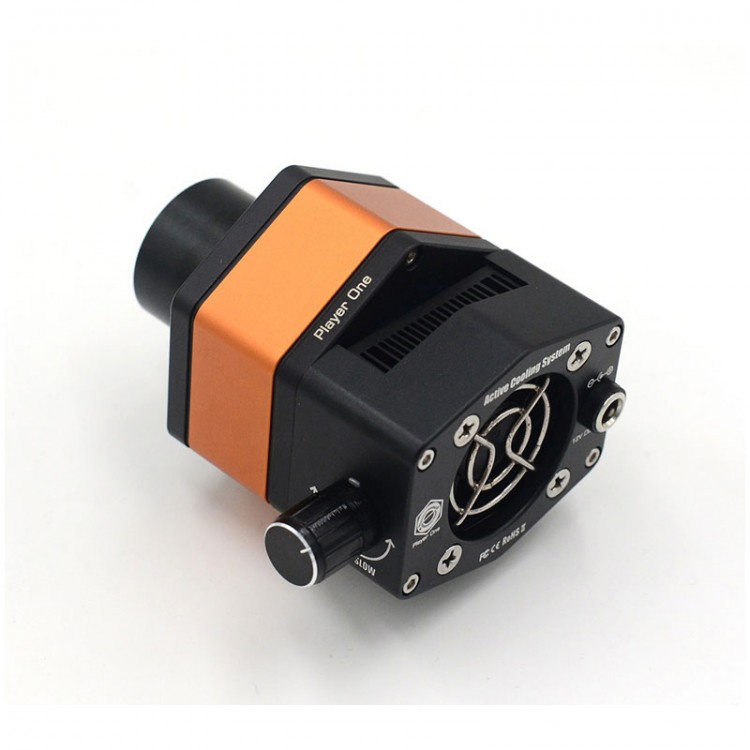
| Quantity | 3+ units | 10+ units | 30+ units | 50+ units | More |
|---|---|---|---|---|---|
| Price /Unit | $572.29 | $560.61 | $543.09 | $519.73 | Contact US |
Player One Apollo-M IMX174 2.3MP Mono Camera Astronomical Camera (with ACS) for Solar Photography
Focus on Solar Imaging!
Apollo series is the world's first camera line specifically designed for solar photography. This series is named after Apollo.
The Apollo series features sensors for Sony with global shutters and a focus on monochrome sensors.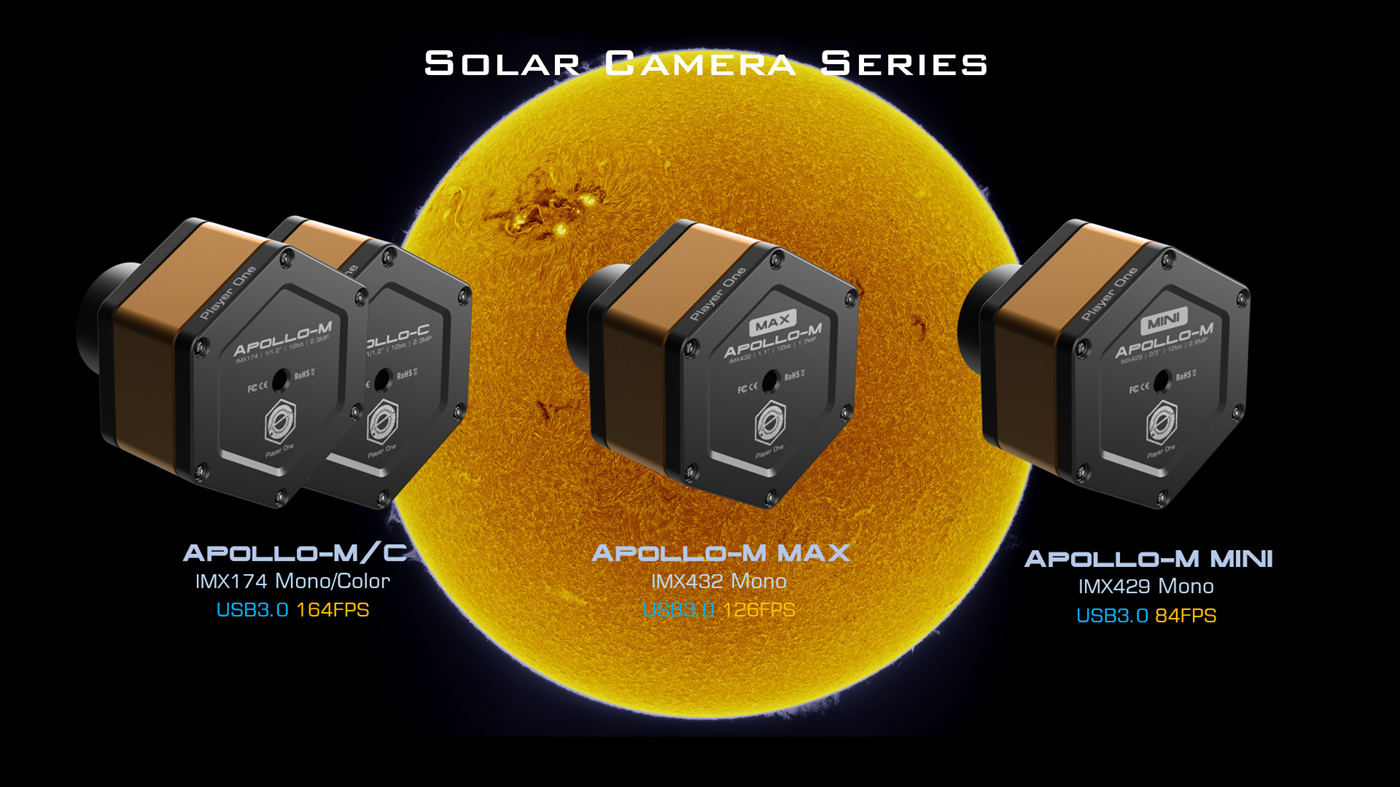
We have launched 4 models of Apollo cameras:
Apollo-M MAX (IMX432) monochrome camera with a 1.1" sensor.
Apollo-M MINI (IMX429) monochrome camera with a 2/3" sensor.
Apollo-M (IMX174) monochrome camera with a 1/1.2" sensor.
Apollo-C (IMX174) color camera with a 1/1.2" sensor.
Note:
-
The solar camera needs to be used with a device such as baader film or
Herschel wedge prism for energy cut-off or light reduction. Do not use
the camera directly on a telescope without a dimming device.
- Other accessories are not included in the package. If you need them, please contact us before purchasing.
Product Description:
Apollo-M
is a solar camera developed by Player One Astronomy. It adopts the
IMX174 1/1.2" format monochrome sensor for Sony. The 5.86um pixel size
accommodates a well depth of 32Ke with a total of 2.3MP (the resolution
is 1944*1216), and the diagonal is 13.3mm.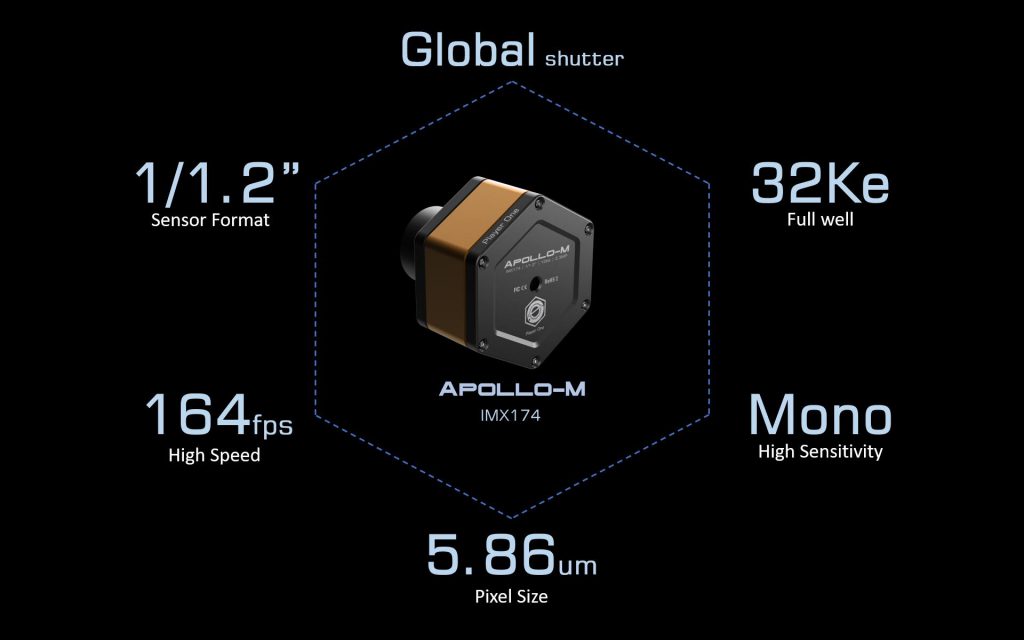
Pregius Technology
Apollo-M
(IMX174) and Xena-M (IMX249) are based on Pregius 1st Gen. It is a
giant leap in CMOS sensor development. IMX174 and IMX249 have the same
performance. The only difference is that IMX174 is faster (164FPS).
Format
Apollo-M (IMX174) has a 1/1.2" format. This size is between Apollo-M MAX (IMX432) and Apollo-M MINI (IMX429).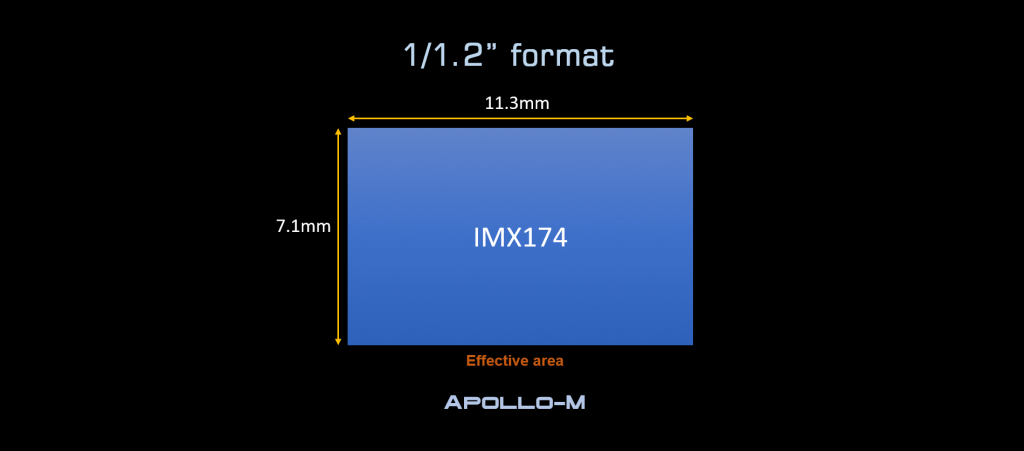
Recommended Accessories:
Optional ACS (Active Cooling System)
ACS
is an external air-cooled system. It is designed for solar and big
format planetary cameras with PCS (Passive Cooling System). ACS can
provide much better temperature control. When your camera has PCS + ACS,
its temperature is only 7℃ higher than the ambient temperature. The
camera body is a little warm, but it is not hot. ACS can be used in
daylight for solar imaging and used at night for DSO lucky imaging.
https://player-one-astronomy.com/product/active-cooling-system-acs-for-uncooled-cameras/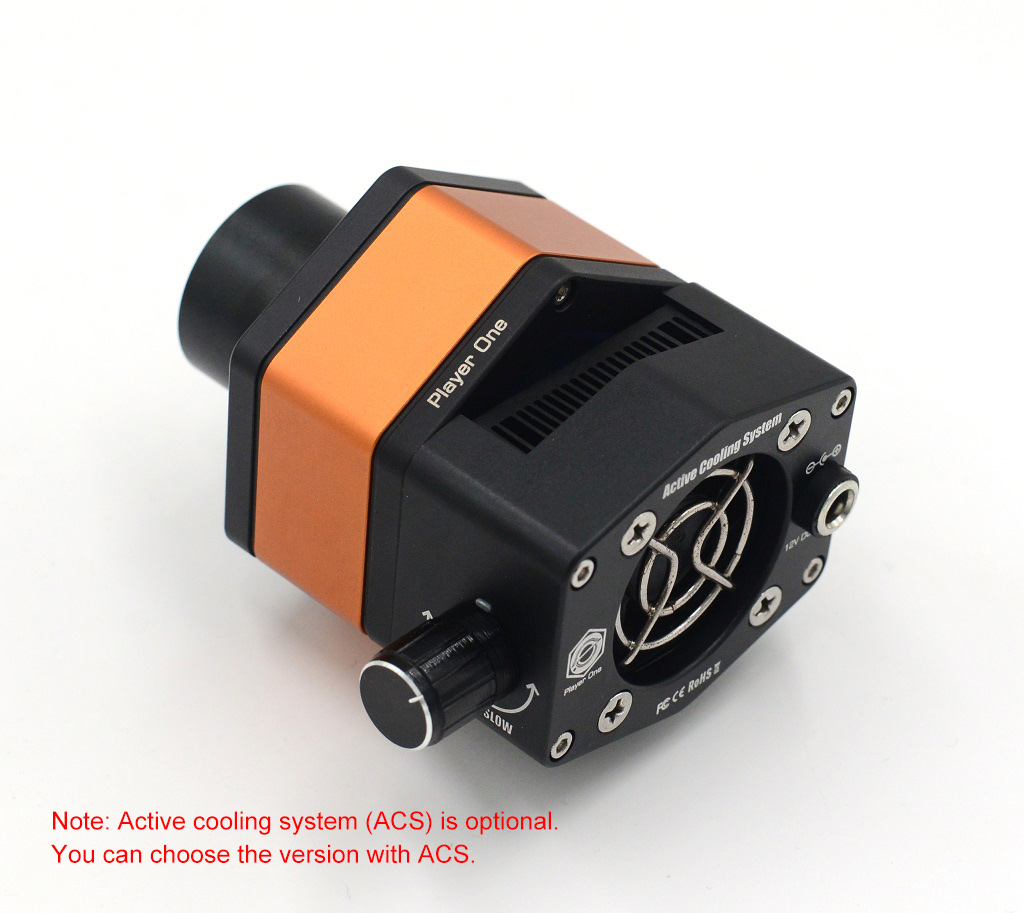
Photosphere 10nm Filter
For better contrast in white light, Photosphere 10nm filter will be a good choice. It has 10nm bandwidth and CWL is 540nm.
https://player-one-astronomy.com/product/photosphere-10nm-1-25-filter-s-series/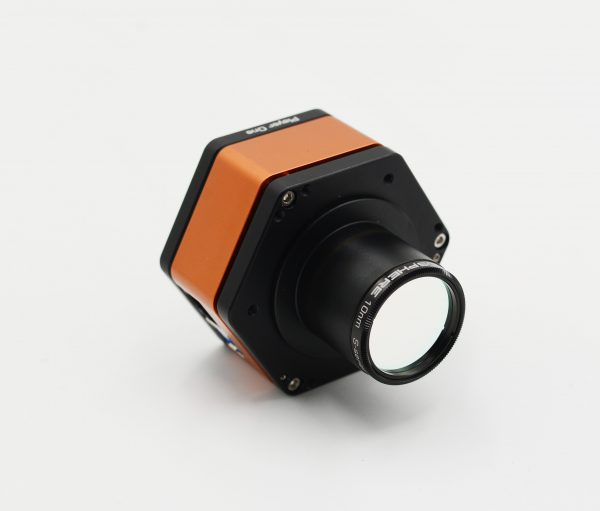
ERF Filter
Introduce new 1.25" ERF filter for Quark Chromosphere (Ha version), to reject energy and extend life space of your Quark.
https://player-one-astronomy.com/product/erf-1-25-filter-s-series-for-quark-chromosphere/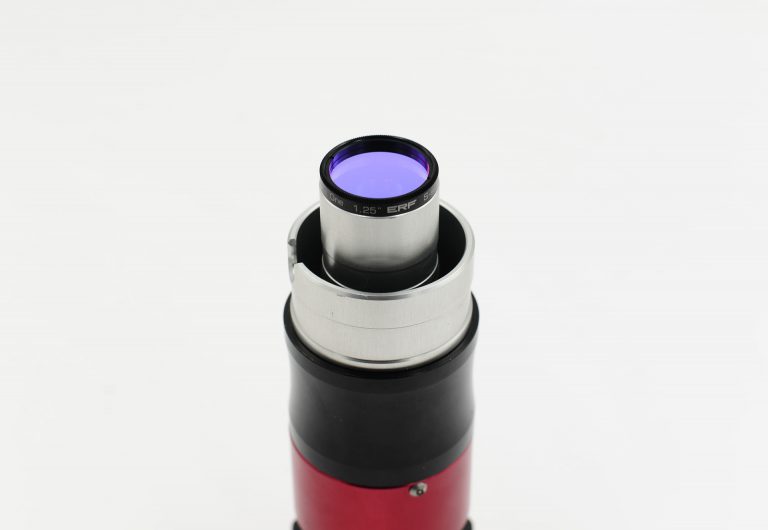
Highlights: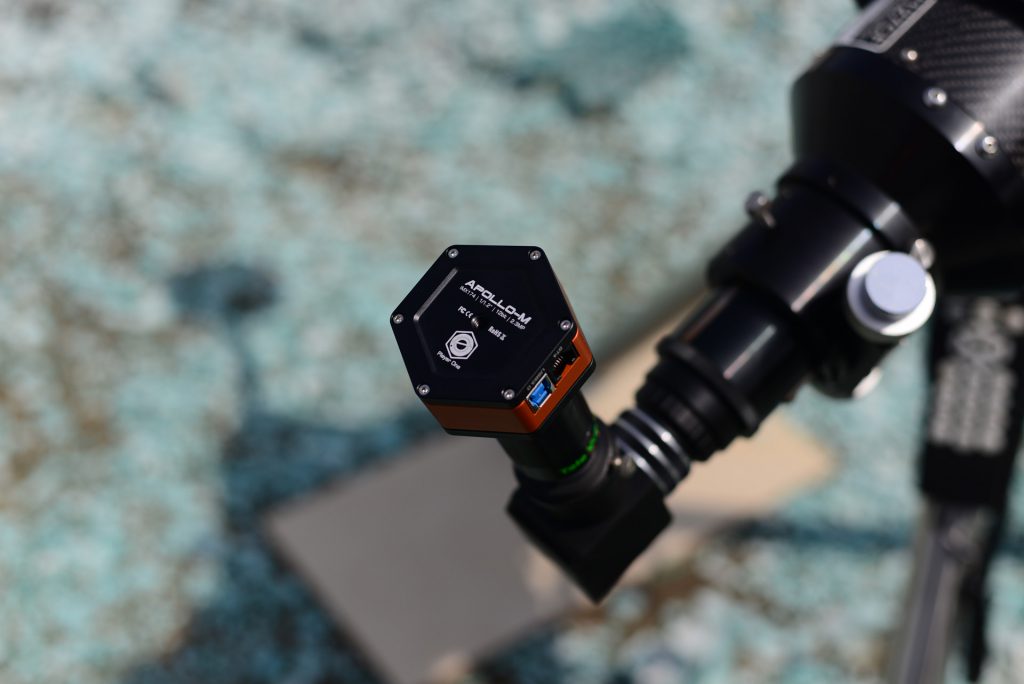
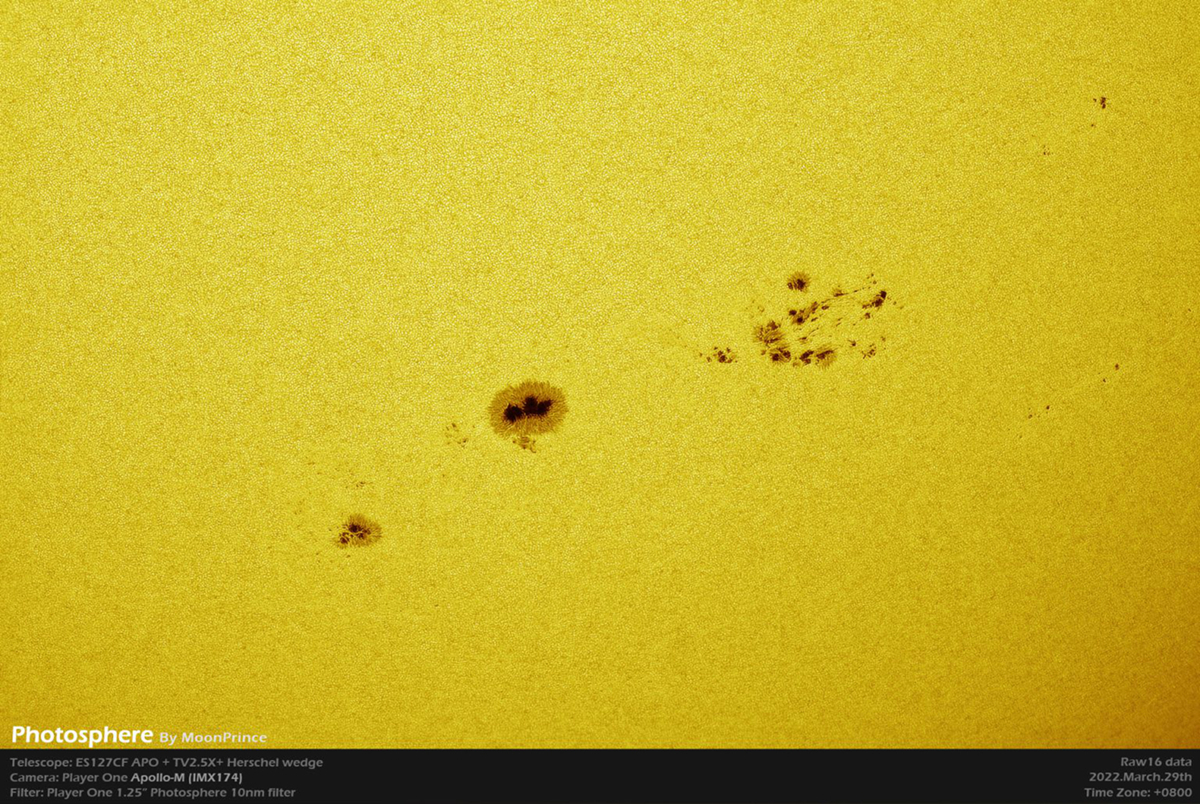
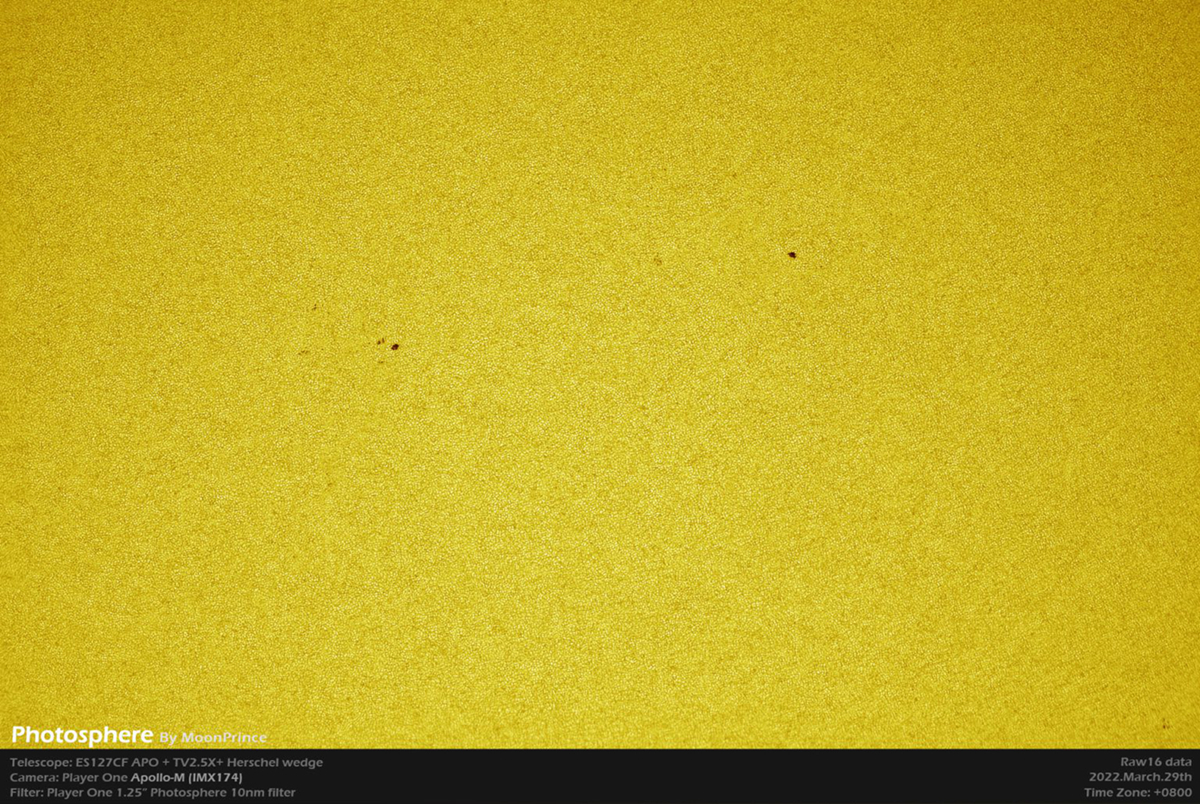
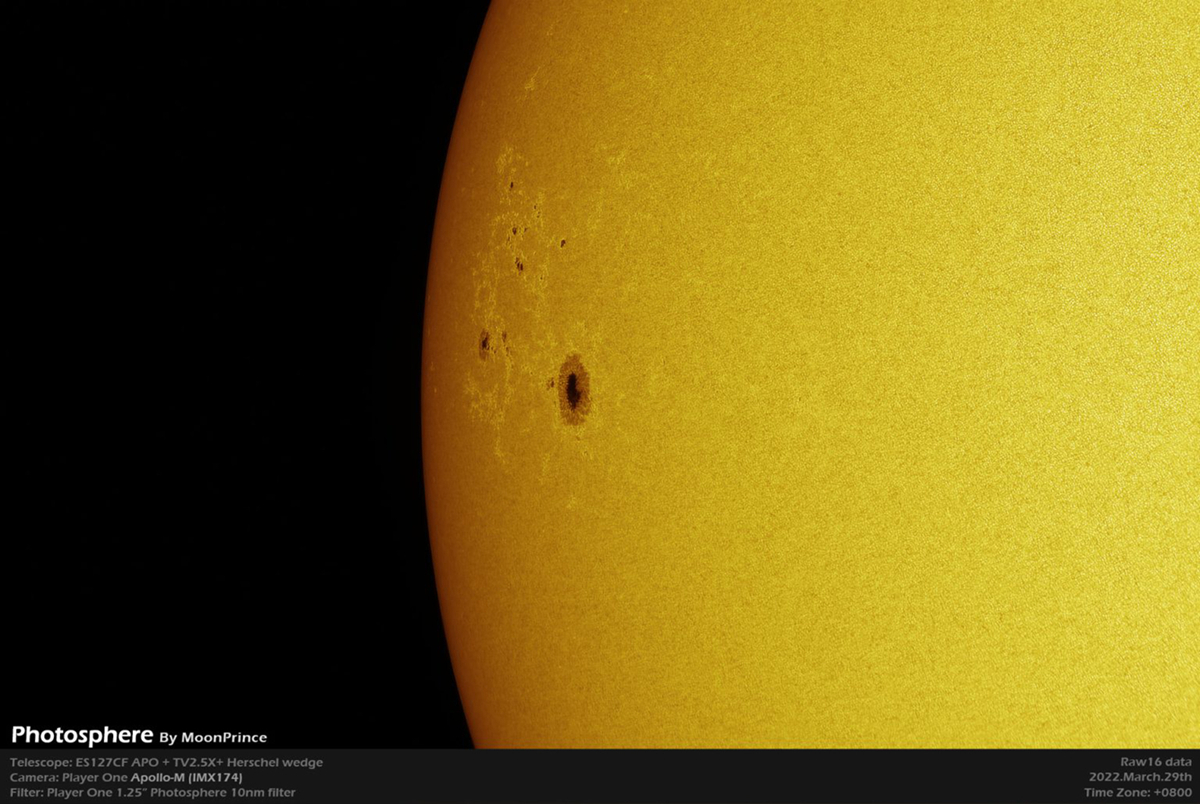
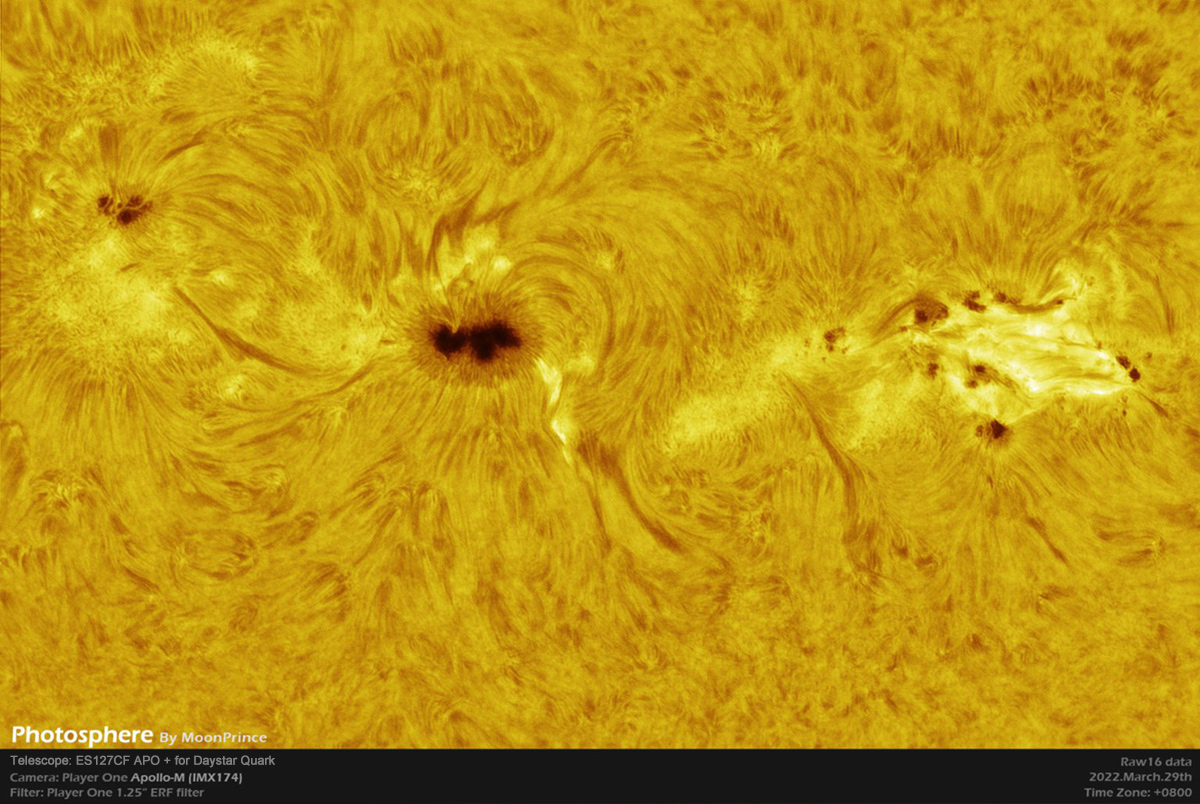
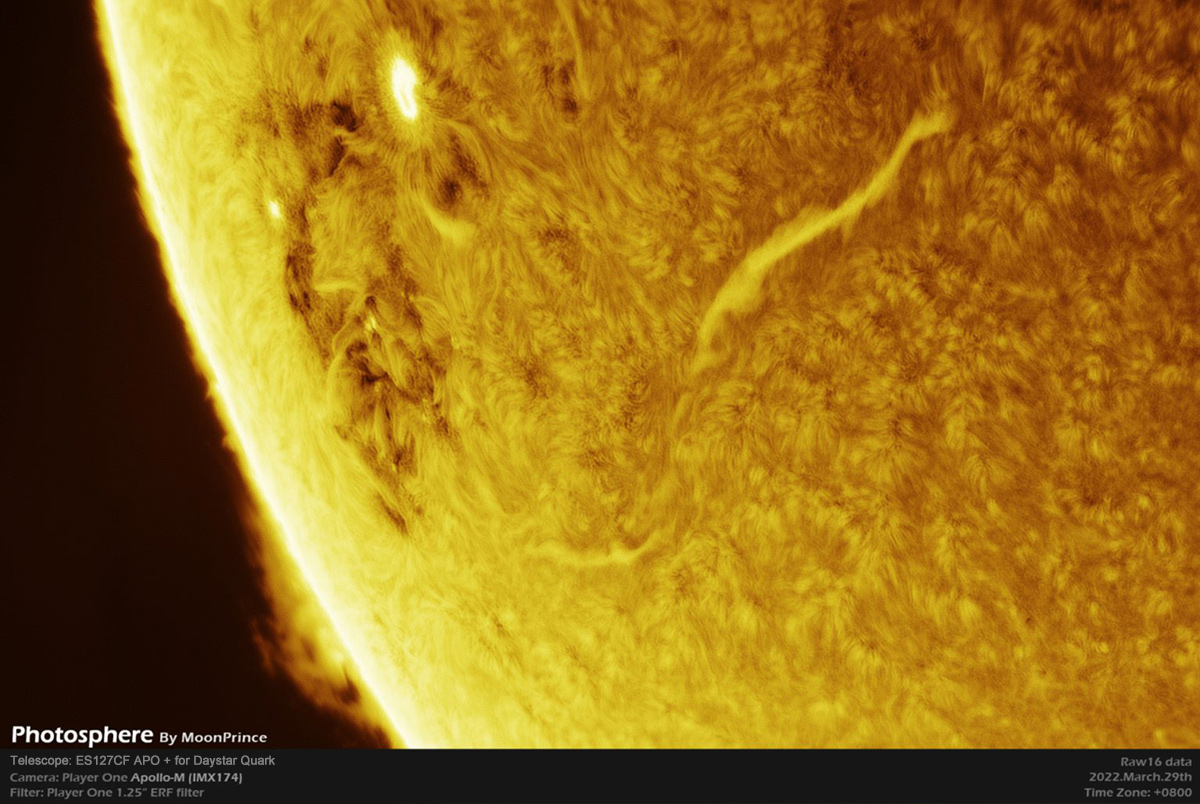
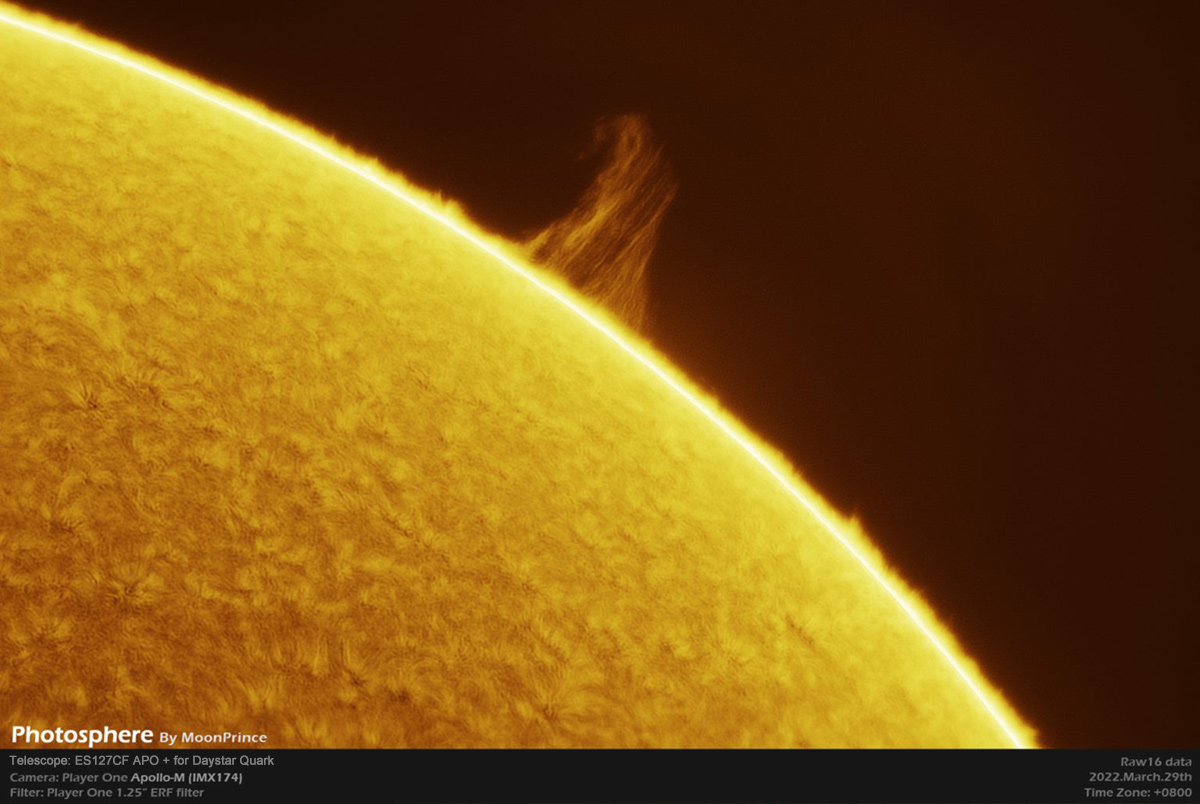
Features:
The
naming of Player One Astronomy cameras is unique. Solar camera line is
named after Apollo, the god of the sun. The suffix of the name describes
the camera's biggest feature.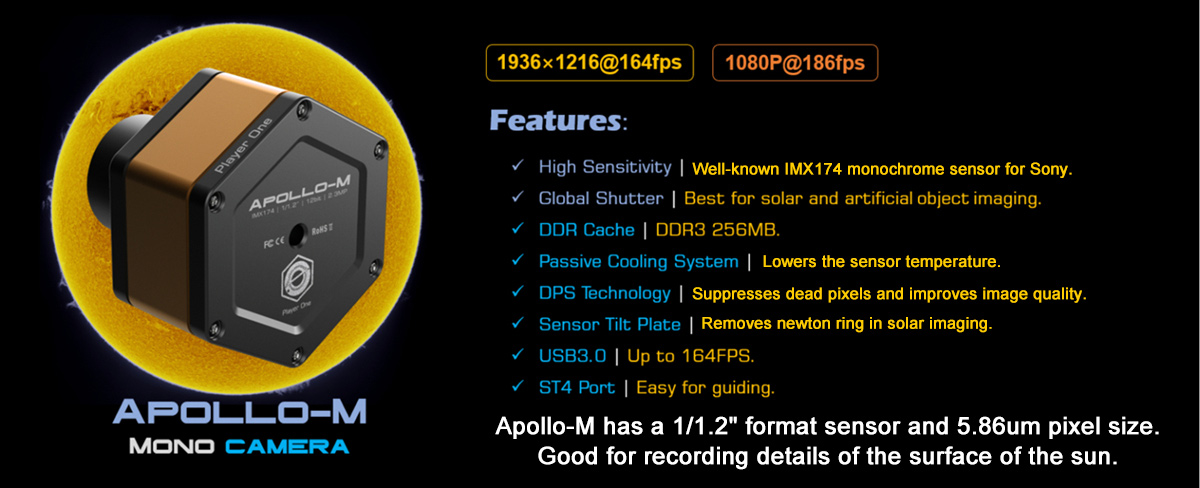
Download drivers and software: http://player-one-astronomy.com/service/software/
Download manuals: http://player-one-astronomy.com/service/manuals/
Cutting-edge Design
The
planetary cameras developed by Player One Astronomy use a scientific
and technological regular hexagon to construct the main body line,
supplemented by round chamfers to achieve both rigidity and flexibility.
The positive orange, which is imply solar, is matched with the low-key
and steady black. And the super-fine frosting process on the entire
surface makes the camera look luxurious and cool, highlighting the style
of high-end players.
2nd Gen - Sensor Tilt Plate
When
you are taking photographs of the sun with a prominence telescope, the
Newton ring will be annoying. Smoother solar images without Newton ring
could be taken by adjusting the focal plate. Get a much smaller field
curvature of the telescope.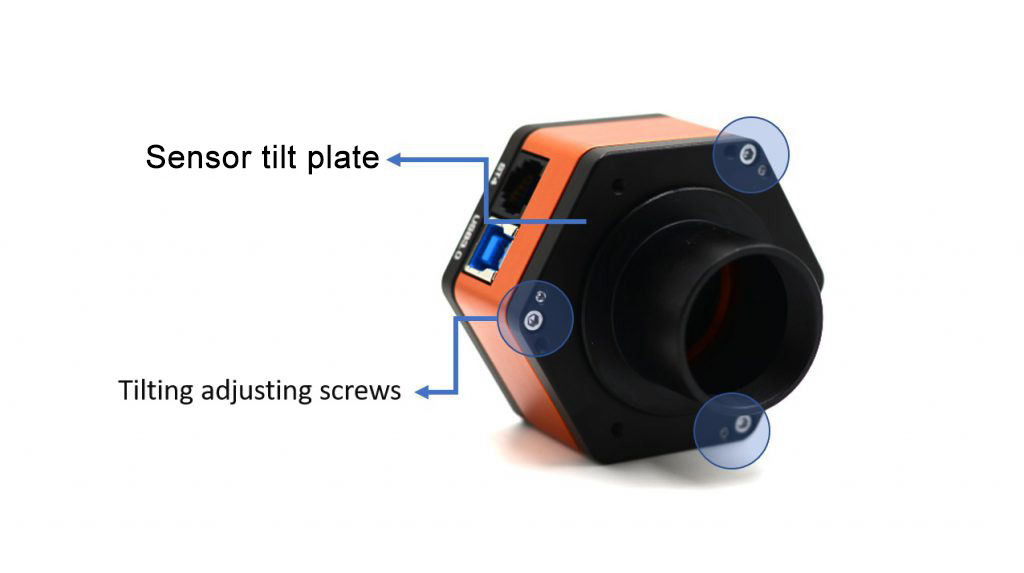
Built-in high-density sponge shading pad can block the light from the side slits without any side leakage.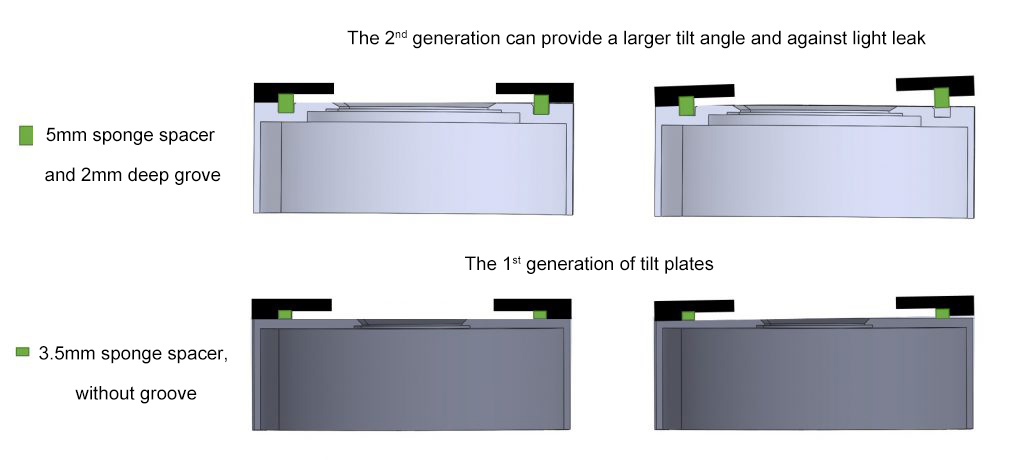
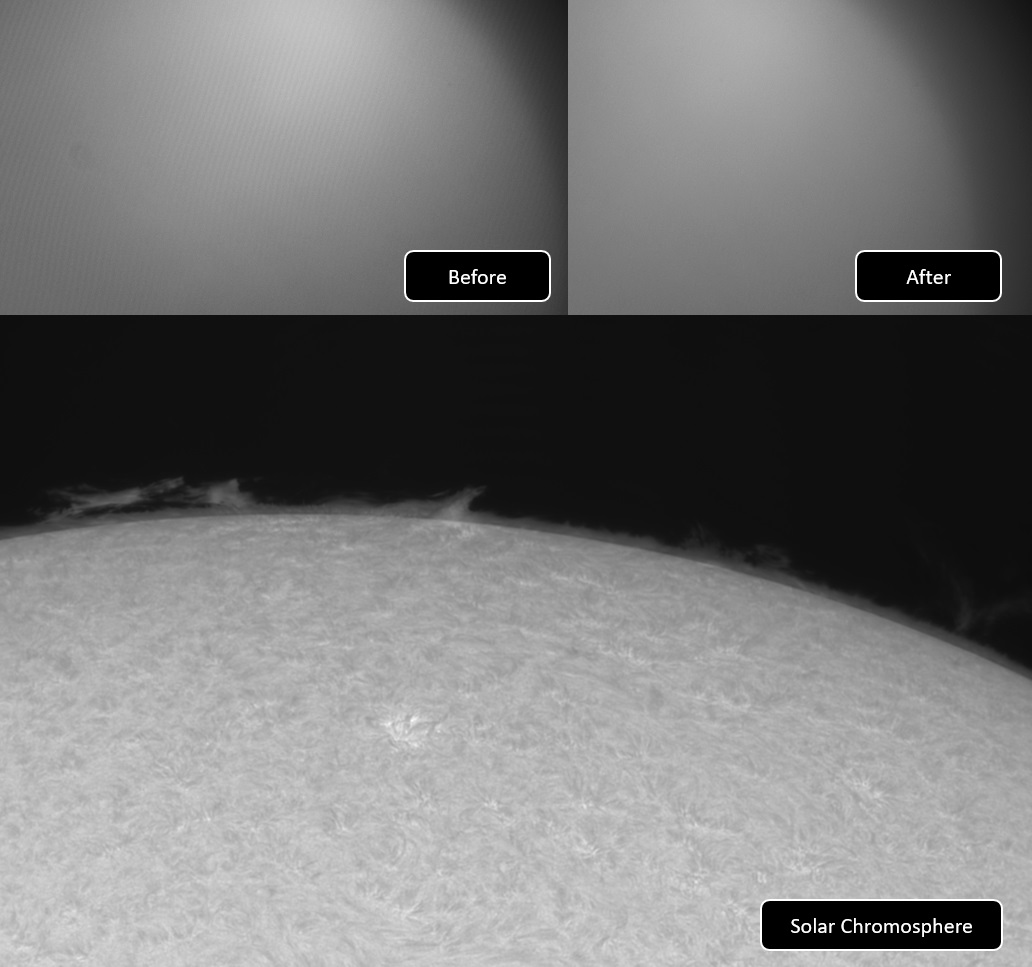
Passive Cooling System
The
temperature of solar cameras working in daylight could be higher than
the temperature when they are used at night. Heat of global shutter
sensors will be a problem, especially for some big formats like IMX432.
Player One adds a new feature called Passive Cooling System to conduct
the heat from the sensor out.
256M DDR3 Cache
Player
One Astronomy cameras are the first one of planetary cameras to use the
DDR3 cache in the world! It helps stabilize and secure data
transmission, effectively avoids frame dropping and greatly reduces read
noise.
With the DDR3 cache, the cameras do not have high demands
on computing any longer. But the cameras still have an excellent
performance even if they are connected to a USB 2.0 port.
DPS Technology
The
planetary cameras from Player One Astronomy have DPS (Dead Pixel
Suppression) technology. The DPS can analyze many dark frames to find
out those fixed abnormal pixels and record the map in camera memory. In
imaging, each exposure frame and those positions of dead pixels will be
given a median value according to the active pixels around the abnormal
pixels.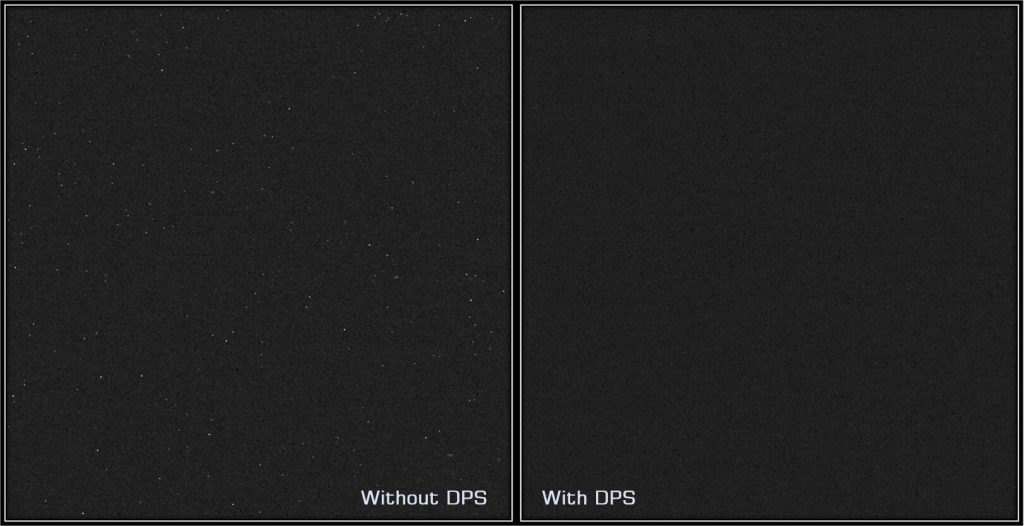
Over-voltage and Over-current Protection Mechanisms
Player
One cameras ensure the safety of your camera and other equipment
through over-voltage and over-current protection mechanisms.
Data Port
When
the camera is connected to the USB3.0 interface and full-resolution
preview is used, it can reach 164 FPS in RAW8 mode (10bit ADC). For
recording images, the actual writing speed will be affected by the
writing speed of the hard disk itself. When the hard disk writing speed
is slow, the recording may not reach the theoretical speed. It is
recommended that you use a quality solid state drive to record data to
give full play to the performance of the camera.
Use an ST4 guide cable to connect the camera and the AUTO GUIDE port of the equatorial mount to do guiding.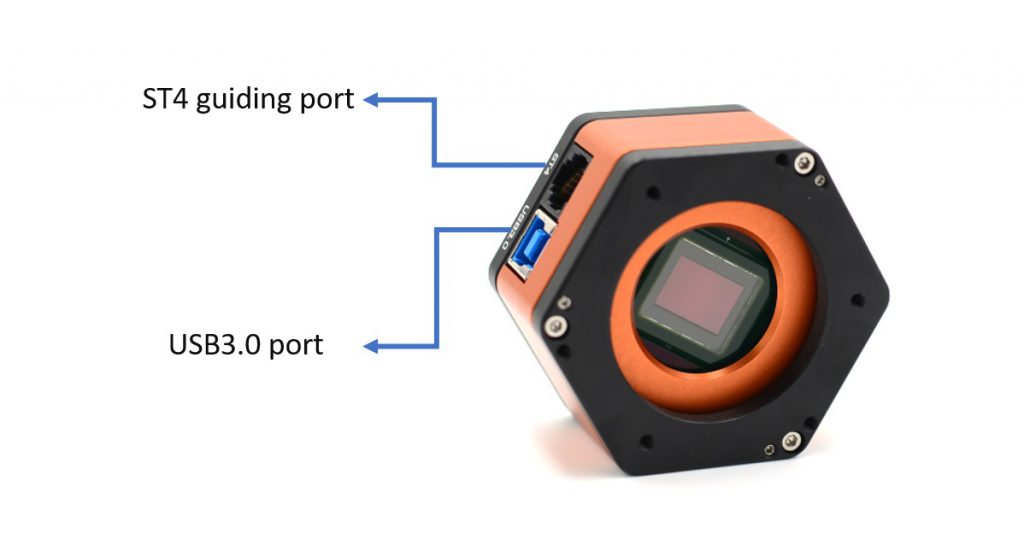
Performance: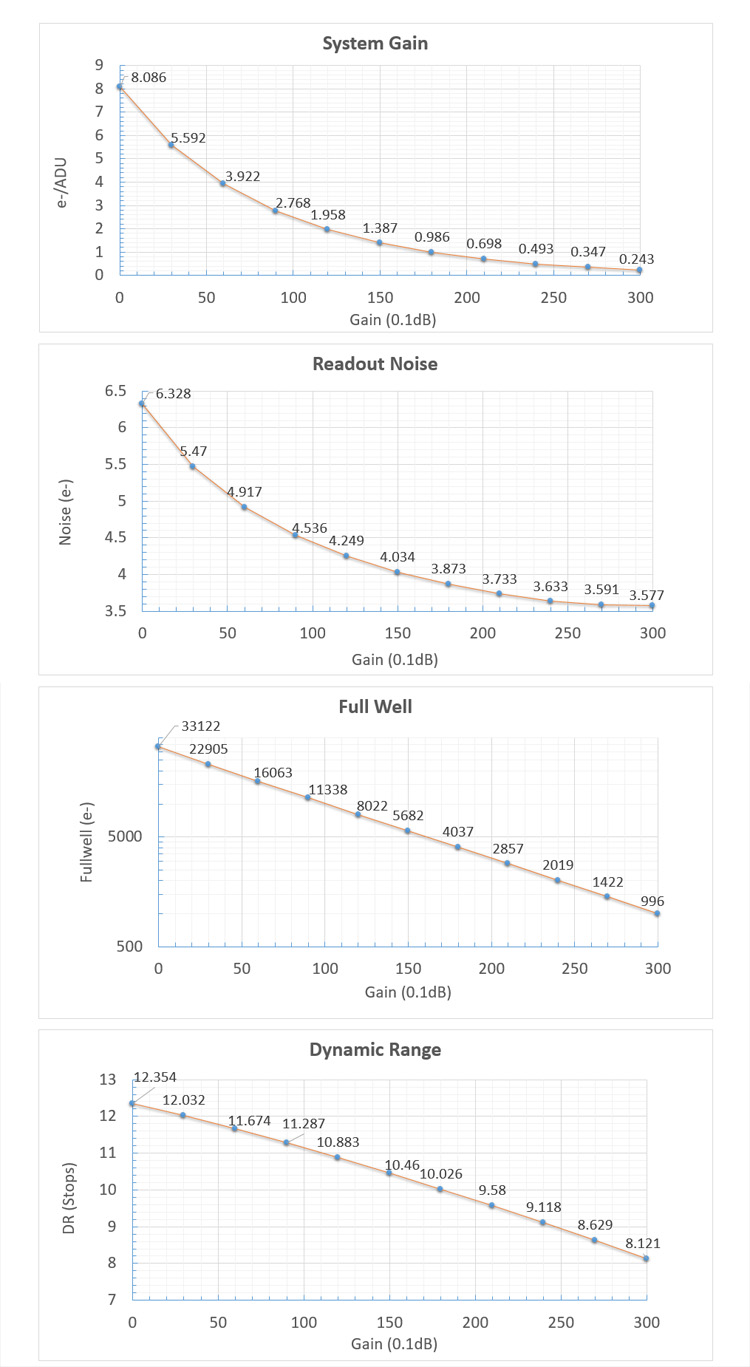
Readout Noise
Regarding
readout noise, we solemnly promise that all values are obtained from
actual tests. You can use the software for Sharpcap 4 for testing. SC4
has a function called Sensor Analysis, providing a very simple way to
test readout noise.
We wrote a tutorial on website: https://player-one-astronomy.com/service/manuals/
If you are interested in readout noise testing, you can try it by yourselves because it is very simple.
QE Curve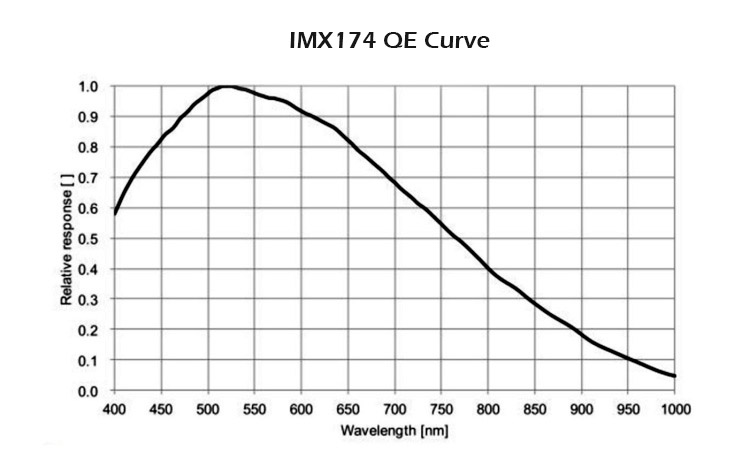
Mechanical Drawing: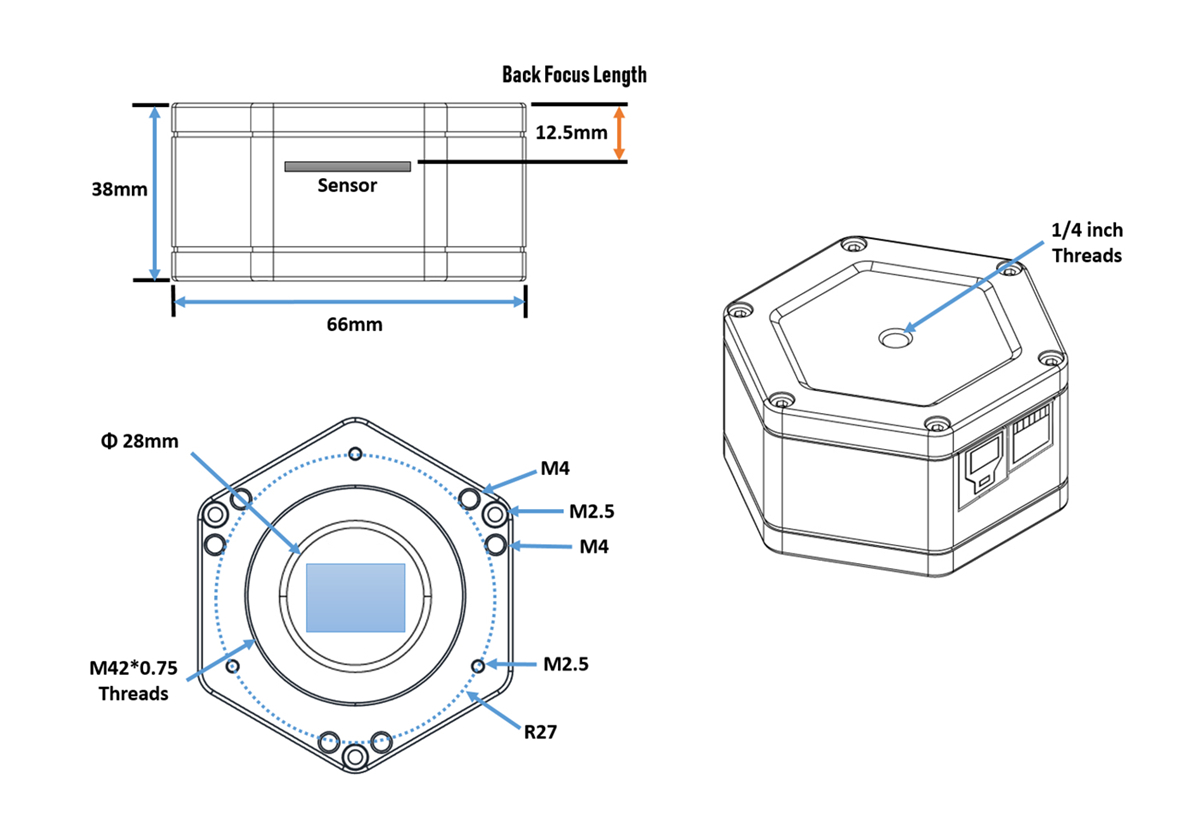
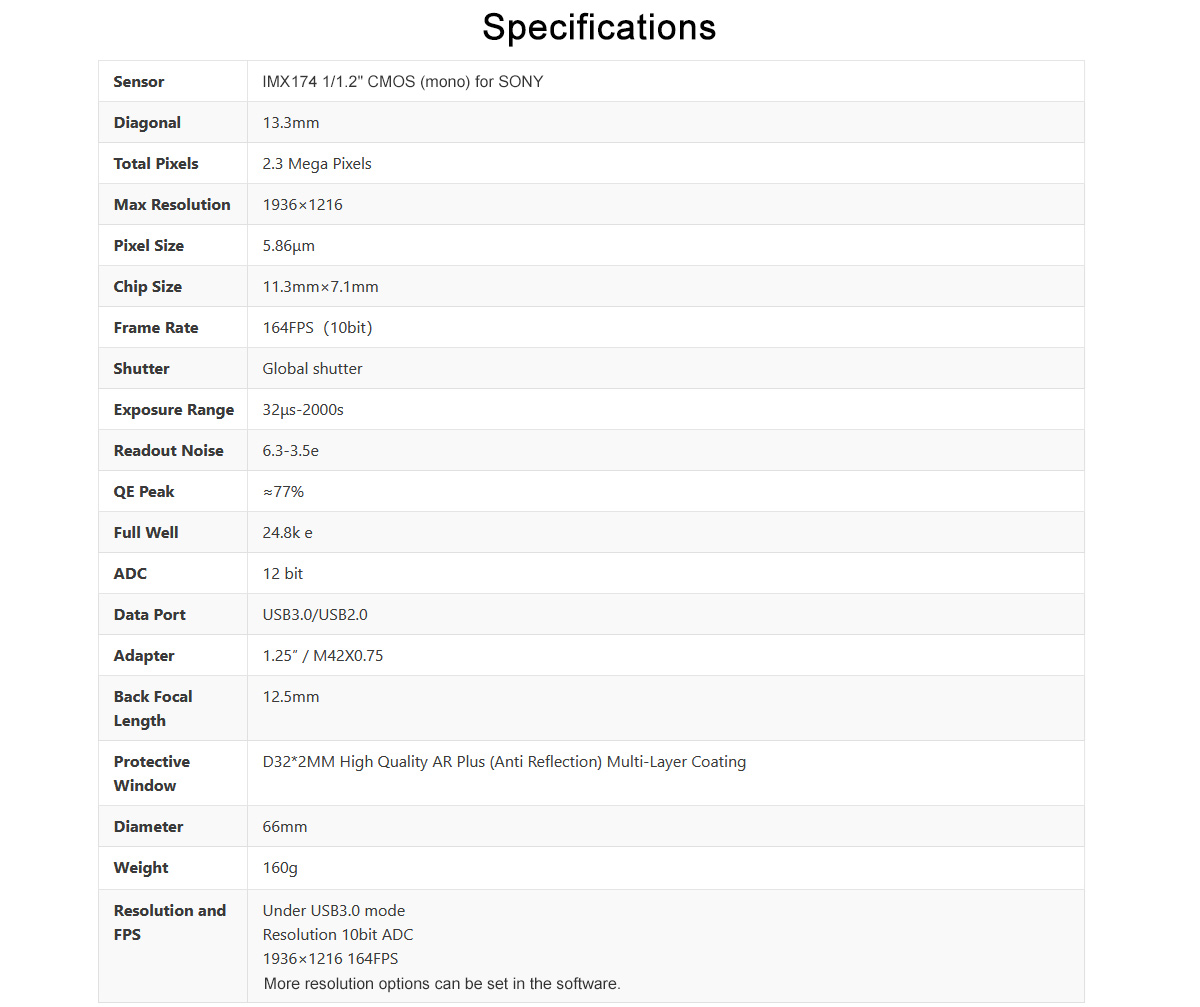
Package Included (with ACS):
- 1 x Camera and T-mount
- 1 x USB3.0 cable
- 1 x ST4 cable
- 1 x M2 hex wrench
- 1 x 1.25" cover
- 1 x Air blower
- 1 x ACS (active cooling system)
Packaging Details (with ACS):
- G.W.: 1kg